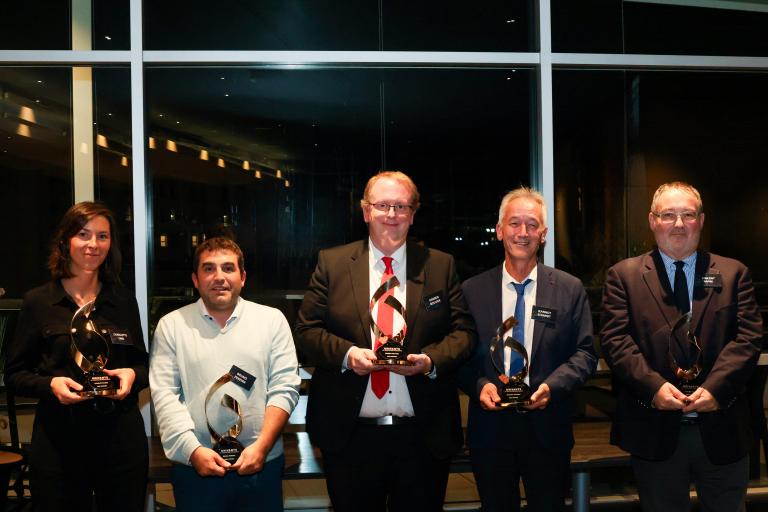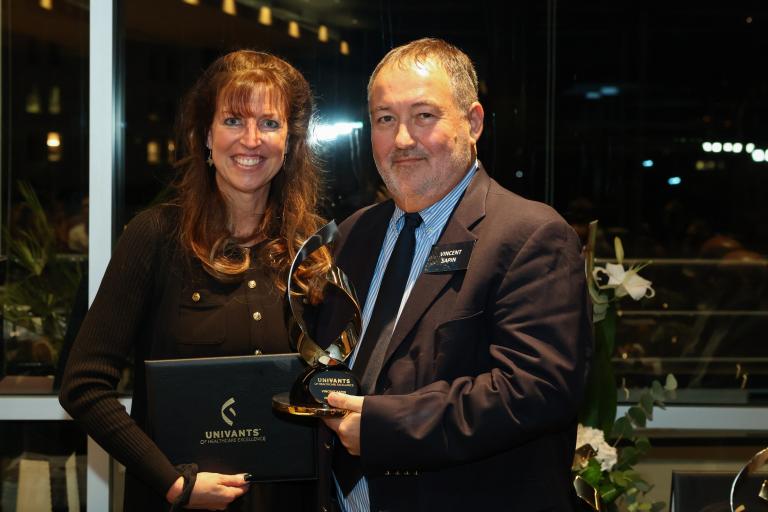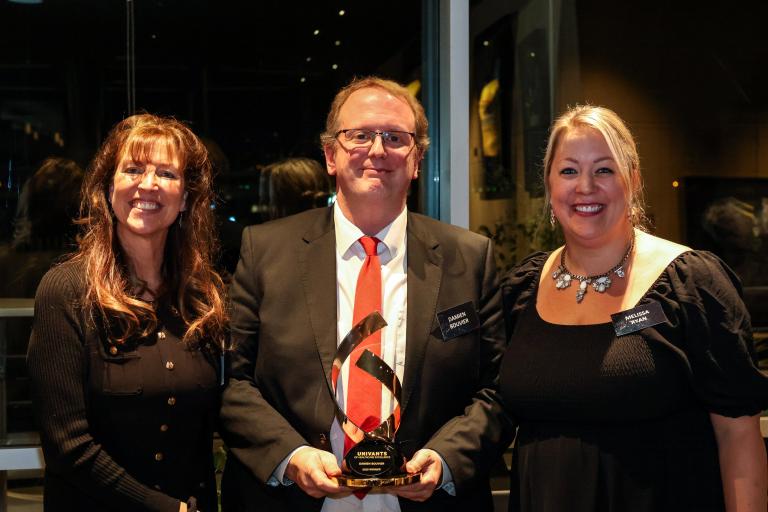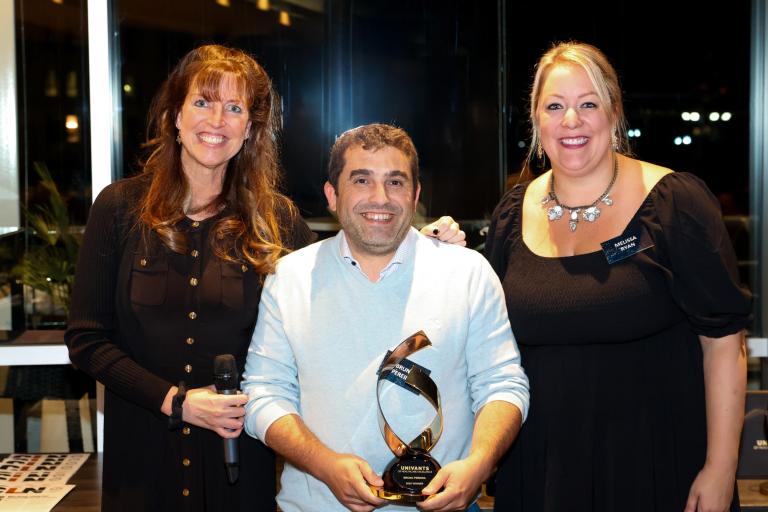A team from Clermont-Ferrand University Hospital, composed of Prof. Vincent Sapin (Biochemistry and Molecular Genetics), Prof. Jeannot Schmidt (Emergency Medicine), Prof. Damien Bouvier (Biochemistry and Molecular Genetics), Dr. Charlotte Oris (Biochemistry and Molecular Genetics), and Bruno Pereira (Biostatistician and Data Manager), has been awarded the UNIVANTS of Healthcare Excellence prize for its innovative project aimed at optimizing the management of patients with mild traumatic brain injury.
The UNIVANTS of Healthcare Excellence Award is an international distinction that celebrates healthcare initiatives demonstrating exemplary interdisciplinary collaboration and measurable impact on care quality. Supported by several global healthcare partners, this award recognizes projects that embody:
- Unity: Bringing disciplines together to achieve common goals;
- Avant-garde: Innovative and bold approaches;
- Measurable Success: Tangible results for patients, clinicians, payers, and healthcare systems.
This award is supported by global partners such as Abbott, IFCC, EHMA, HIMSS, NAHQ, and the Healthcare Economics Institute.

A major breakthrough in the management of traumatic brain injuries through blood biomarkers
The project is based on a promising innovation: the use of blood biomarkers to optimize the care pathway for patients with traumatic brain injuries. This approach not only accelerates clinical decision-making but also reduces unnecessary examinations while improving patient safety.
Understanding Traumatic Brain Injuries
Traumatic brain injuries are classified into three categories:
- Severe: Easily identifiable, requiring immediate care and generally posing no diagnostic dilemma;
- Mild: Without clinical consequences, requiring no extensive examinations;
- Moderate: Representing about 80% of cases, these are the most common. They involve patients who come to the emergency department after a head impact, without obvious signs of severity.
The Limits of Traditional Protocols
Until now, the management of mild traumatic brain injuries relied on a clinical examination based on the Glasgow scale. In cases of suspected intracranial hemorrhage, a CT scan was systematically performed. However, these scans are very rarely positive, leading to:
- Unnecessary exposure to ionizing radiation, particularly concerning in children;
- Excessive mobilization of medical resources;
- Unnecessary stress for patients and their families.
A Simple Blood Test for an Informed Decision
Faced with this situation, the teams at Clermont-Ferrand University Hospital developed an innovative alternative: measuring the S100B protein in blood. Thanks to this innovation, a simple blood test can now detect the presence of a traumatic brain injury. This quick and non-invasive test offers a reliable alternative to CT scans in many cases, reducing the risks associated with medical imaging and optimizing emergency care management.
International recognition for a diagnostic innovation born in Clermont-Ferrand
The work carried out on blood biomarkers in the management of traumatic brain injuries has recently attracted the attention of the UNIVANTS of Healthcare Excellence Award jury, an international distinction granted by a consortium of healthcare experts. This award honors the most innovative and impactful diagnostic initiatives worldwide.
Remarkably, it was not Clermont-Ferrand University Hospital that applied. The jury itself identified the locally conducted work and recognized its innovative, practical, and field-applicable nature. This recognition highlights the relevance of an approach that is both practical and accessible, addressing real challenges in everyday hospital practice.
Impact Far Beyond the Auvergne Region
The impact of this innovation goes well beyond regional borders. In 2022, it led to the development of professional practice recommendations (PPR), confirming its integration into national standards of care.
An Exemplary Interdisciplinary Collaboration
This success is the result of close collaboration between biologists and clinicians, illustrating the power of interdisciplinary work in medical innovation. Together, they transformed an idea into a concrete solution, serving patients and improving hospital efficiency.





